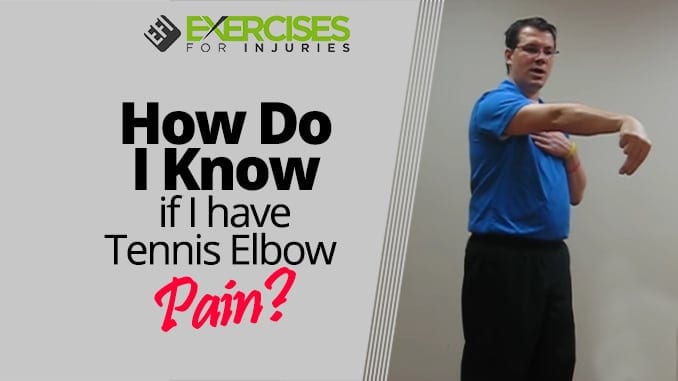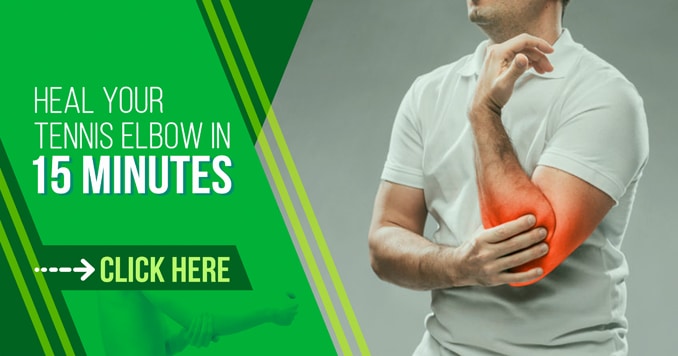
When you’re first starting to play tennis, it may seem like an easy sport. In reality, however, it’s a very dynamic and athletic activity. You use your arms to swing the racket back and forth, which means that your elbow joint is constantly being placed under stress. When you play tennis on a regular basis and don’t take adequate rest in between sessions, you can put your body at risk for developing tennis elbow or other types of elbow pain.
Moreover, if you have bad technique or conditioning from other sports such as baseball or cricket, there is an even higher chance of developing this painful condition. While it may not be found in every player who plays tennis on a regular basis, many people develop some sort of elbow pain while playing this game. It is important to identify these signs and symptoms in order to catch them early on before they get worse.
What Is a Tennis Elbow?
Tennis elbow is a type of overuse injury that can affect the muscles that are connected to your elbow joint. In most cases, this injury is caused by frequent and repetitive use of your wrist and/or arm muscles. Tennis elbow is also known as lateral epicondylitis, and its symptoms include pain, tenderness, and stiffness in the muscles of the forearm, particularly on the outside of the elbow. If you’re experiencing pain in your elbow, then it’s important to rule out tennis elbow as the cause. In most cases, you can treat tennis elbow at home with rest, ice, and pain relievers. But if the pain is severe, you may need to see a doctor.
How to Recognize the Signs and Symptoms of Tennis Elbow
One of the best ways to recognize the signs and symptoms of tennis elbow is to keep track of your pain levels. Keeping a pain journal and recording the level of pain in your elbow each day can help you decrease your elbow pain.
You can also consider taking a journal-writing class to help you get all of your thoughts out of your head and onto paper. This can be a great way to organize your thoughts and keep track of your symptoms.
What are the symptoms of tennis elbow?
If you’ve been playing tennis and have been experiencing pain in your elbow, then you may have tennis elbow. While there are other medical conditions that can cause pain in the elbow, the tennis elbow is one of the most common.
Some of the other signs and symptoms of tennis elbow include:
- Pain in the elbow
- Pain in the forearm
- Pain in the wrist
- Pain in the shoulder
- Loss of strength in the arm
- Stiffness in the elbow
- Swelling in the elbow
- Tenderness in the elbow
Tips to Help You Identify the Signs of Tennis Elbow
1. Watch your lifting technique
Be mindful of how you lift objects, especially when they are heavy. Avoid lifting with your hands and instead lift with your legs.
2. Take breaks between tennis sessions
Your tennis sessions should include several breaks. During these breaks, you can stretch and apply ice to your elbow joint.
3. Avoid aggressive tennis strokes
Stay away from tennis strokes that put a lot of stress on your elbow joint. Close to mid- range tennis strokes are best for beginners and those with
Other muscles in your arm that can cause pain
While tennis elbow is the most common cause of pain in your elbow joint, it is important to understand that other muscles in your arm can also cause pain. For example, if you experience shoulder impingement, you may feel pain in your shoulder joint.
Similarly, if you have bicep tendinitis, you may feel pain in your bicep muscle. If you are experiencing pain in your elbow joint, it is important to understand that there are various muscles in your arm that can cause pain. These muscles can become inflamed and cause pain, so it is important to visit a doctor if you are experiencing pain in your elbow joint. Your doctor can help you to determine the cause of your pain and help you to get relief from your symptoms.
The question about tennis elbow pain is simple.
The answer is simple. I put it in a video for you:
CLICK HERE to watch the YouTube video.
If you, one of your clients or if you know someone who has tennis elbow pain, this will help:
Rick Kaselj, MS





